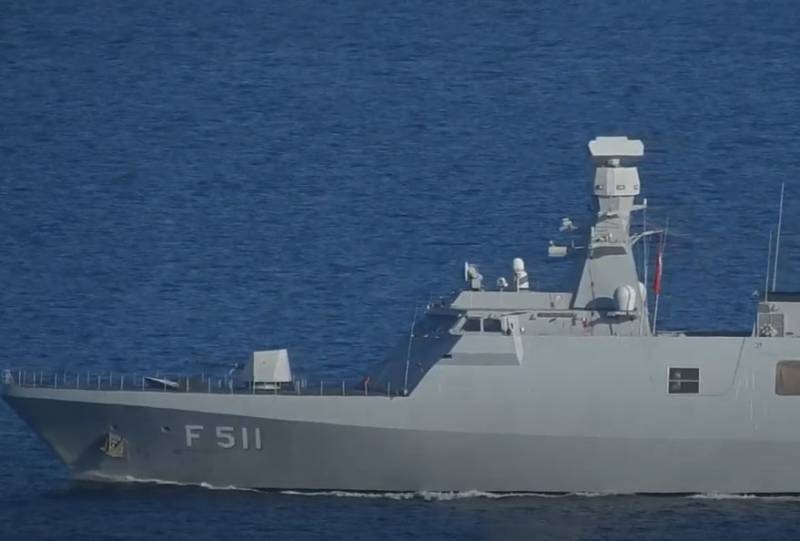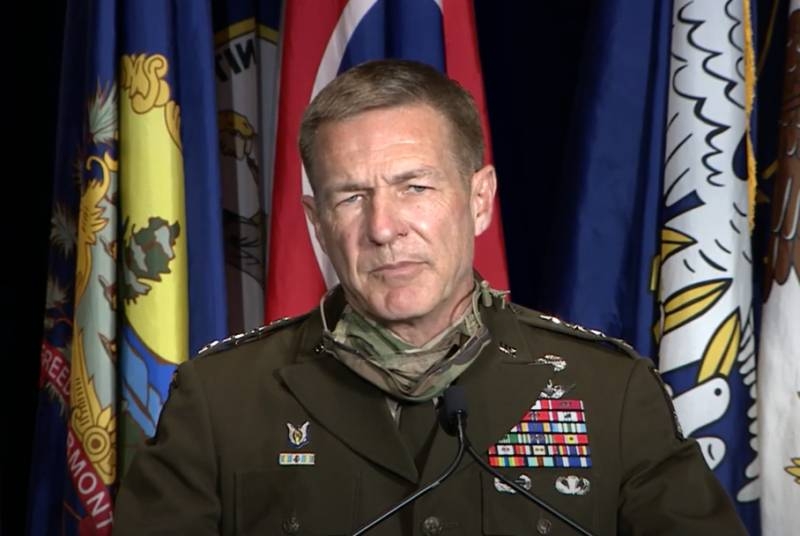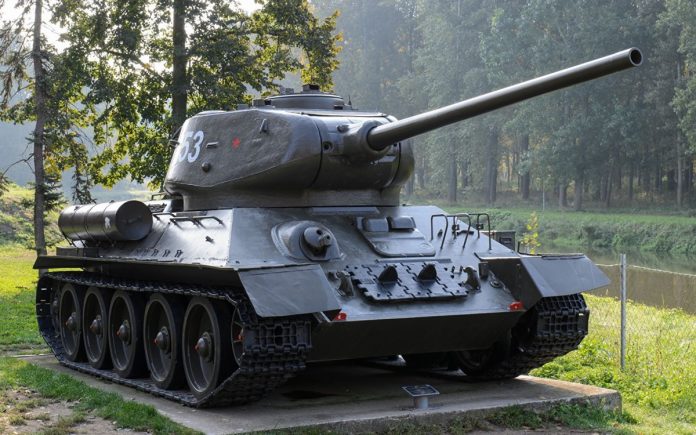
As is known, in USSR T-34 uniquely regarded as the best tank of the Second World War. later, however,, from the Soviet Union collapse, This point of view has undergone revision, and the debate about, what kind of place it is actually occupied by the famous "Thirty" in the tank of the hierarchy of the world of those years, do not cease to this day. Yes, and one can hardly expect the, that this debate will be discontinued in the next few years, if not decades, except that future generations will completely lose interest in history.
The main reason for this, According to the author, paradox lies in the history of the tank T-34: He suffered defeats during his strength and weakness of the won in the period. In the first period of the war, when our tank in its reference TTC leaves far behind its German "peer", T-34 as if not earned great fame on the battlefields: Red Army in 1941-1942 He suffered one defeat after another, to and 1943 g. our tank units, often, suffered very heavy losses.
With the advent of the famous "Tiger" and "Panther" Our T-34 lost its superiority in performance characteristics, but at the same time, beginning with 1943 city, our Soviet army finally captured the strategic initiative and did not let her have until the end of the war. Not that, Wehrmacht to become a whipping boy, Germans until the end remained a skillful and persistent adversary, but to confront the Soviet war machine, and, in particular, Soviet tank corps they could not.
of course, such a logical inconsistency is striking and makes the search for some kind of trick: at some point for revisionists has become a classic view, that T-34, despite its, formally, excellent performance, on a number of non-obvious disadvantages was mediocre tank, as manifested in the battles 1941-1942 gg. Well, and then the Germans supposedly just overwhelmed "the corpses of Soviet tank": prevozmoglo quality and quantity t.d.
In this series of articles we will try to understand, which prevented the T-34 win a convincing victory in the initial period of war, and that has helped him to become a tank later Victory. A start with a simple question - to what generally created T34?
At the time of this tank in the USSR "rules of the ball" so-called deep operation, wherein the main tank forces operative compound was considered mechanized (for some time also called tank) housing. Its main task is considered fighting in the operational depth of enemy defenses.
Clarify meaning of this definition. When the troops take up defensive positions, it is a strategic and operational areas. tactical zone starting line of contact with the enemy and end the rear boundary of the first echelon of the army - this is the zone, in which the defenders expect bleed attacking their group, stop them, defeat them. Operational area located just behind the tactical - there are second echelons and reserves tactical defending, as well as various reserves, warehouses, airfields, headquarters and other extremely important for any military objects.
so here, anticipated, in advance of the Soviet mechanized corps (MK) will not participate in breaking the enemy's tactical defense, and that for them it will make the infantry divisions combined armies. MK were to be introduced into the work already done by the enemy's defense gaps and act not operational depth, destroying not really had time to get ready for the enemy's defense. With this, on the then existing ideas, could easily handle like tanks BT-7, but further depth "deep operation" has been expanded from initial 100 to 200-300 km, that is expected, Mechanized Corps that will act on the front-line operational depth. There has to be expected, MK, acting in isolation from the main forces of the army, may meet with more serious, organized resistance.
It was considered, that the main threat to the mechanized corps would represent the enemy tank connection, as, in the opinion of our military analysts, Once they have sufficient mobility to, to be concentrated in a timely manner to counter-attack. Besides, It is taken into account the saturation of the infantry formations large number of small-caliber anti-tank artillery, which could also lead to huge losses escaped to the operating room tank units in the case of, If it is necessary to attack the inferior in numbers, but had managed to take the enemy's defenses.
For, to fend off these threats, anticipated, one side, create a tank with protivosnaryadnym booking, that allowed him not too wary of meetings with a small-caliber TVET, and on the other, to provide such a concentration in the tanks Mechanized corps, that the opponent simply did not have time to collect and throw in a sufficient number of connections, to resist them. Of course, taken into account the fact, that most modern tanks was armed with all of the same caliber guns, that will not be effective against tanks with protivosnaryadnym booking.
of course, envisaged for the mechanized corps and other forms of combat use, including participation in the environment and preventing the break surrounded by enemy troops (as one of the goals of the fighting in the main enemy defense zone), counterattacks he broke through our defenses tank groups, etc..
From today we can say the experience, that the concept of the above-described deep operations, providing for the actions of large motorized formations in the operational depth of enemy combat formations, It was fundamentally correct, but it contained a serious error, It makes it impossible to its successful implementation in practice. This mistake was known absolute tank on the battlefield - in fact, our military experts believed, the clean tank connection is self-sufficient and be able to act effectively even in isolation, or with minimal support infantry, field artillery guns and PTO. In fact,, even the most powerful and strong tanks, It is one of the most important military weapons, still reveal their potential only through joint action with other kinds of ground forces.
Looking ahead, we note, that this error does not give us reason to suspect our military leaders of those years in the rigidity or the inability to predict the characteristics of military conflicts of the future. The thing is, that a similar mistake made absolutely all the leading countries of the world: and in England, and in the US, and, of course, German tank formations originally contained an excessive amount of tanks at the expense of motorized infantry and artillery. Interesting, that the generals of the Wehrmacht did not open their eyes even the experience of the Polish campaign. Only after the defeat of France, before the "Barbarossa" operation, the Germans came to the optimal composition of its armored divisions, and who have demonstrated their highest efficiency in the Great Patriotic War.
You can talk about, that the Soviet tank forces before the war were destroyed in the border battle, that came 22-30 June 1941 g. (end date rather conventional) and that the Red Army lost. During this battle, a significant part of the mechanized corps, concentrated on the western border, either killed, or it suffered heavy losses in the material part. AND, of course, together with T-26, BT-7 on battlefields defeated and latest T-34 and KB-1. Why did this happen?
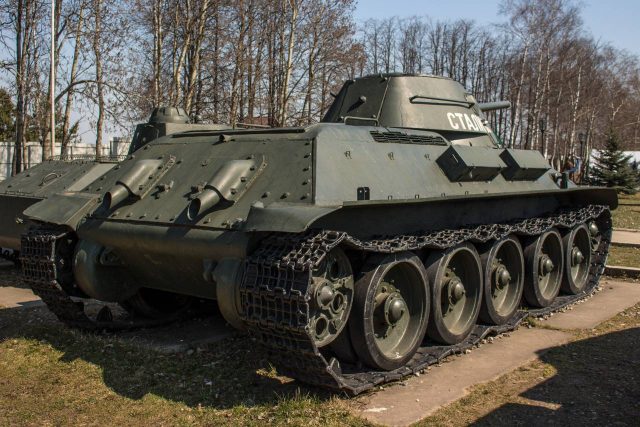
The reasons for the defeat of our armored vehicles is quite impossible to separate and treat the common causes of, leading to failure of the Red Army in the initial period of war, namely:
1. The strategic initiative belonged to our enemy.
The Germans had a large spy network in our border districts, their aircraft for the purpose of intelligence activities are regularly violated the air borders of the USSR, Wehrmacht concentrated forces and inflicted blows there and then, where and when considered necessary. You can talk about, Germany to take full advantage of, which gave her an unprovoked attack on the USSR and from the first day of the war to seize the strategic initiative in their hands;
2. In the absence of Soviet military plans to reflect a similar invasion.
The thing is, that the pre-war plans of the Red Army largely copied the similar plans of imperial times, and were based on understanding the simple fact, that the beginning of the war - this is not the time, when the enemy crossed the border, and when he announced a general mobilization. At the same time the USSR (as well as the Russian Empire before) much larger than Germany in size at a much lower density of railways. Respectively, while the beginning of the general mobilization of Germany was the first time to deploy the army on the border with the Soviet Union and the first attack, catching our armed forces is only partially mobilized.
To avoid this the USSR (as well as the Russian Empire) created covering troops in the border military districts, wherein, that in peacetime they had a number of divisions, much closer to the standard. As a result, with the beginning of general mobilization of these forces were replenished to full staff for a few days, and then we were to launch an attack on enemy territory. This attack, of course, could not have a decisive character and should be carried out for the purpose of mixing the enemy plans for army deployment, get him to fight defensive battles, disrupting his plans, and thereby win a few weeks to complete the mobilization of the Soviet (previously - Russian) army.
Would like to note, we tried to implement this scenario in 1914 city: speech, of course, It is talking about the East-Prussian operation, that is, the coming of the armies of Samsonov and Rennenkampf East Prussia. AND, of course, it should be noted that, that the presence of this plan of a preventive offensive with limited goals subsequently gave rich soil to would-be historians and traitors to the Motherland for insinuations in the style of "Bloody Stalin was preparing to attack Hitler's darling first and conquer Europe".
However, the Great Patriotic War began quite differently. Since Germany led military operations with 1939 city, her army, of course, was mobilized and remained so even after the defeat of France - this was due to the fact, that Great Britain did not lay down arms and continued the war. Respectively, at 1941 g. completely abnormal, unplanned situation: Germany had a fully mobilized military, but the USSR - no, and he could not start a general mobilization, because it would provoke Germany to war. As a result, we were able to carry out only partial mobilization under the pretext of military training in the border districts..
For, to set in motion pre-war plans, we should have attacked first at the moment, when will the massive transfer of German troops to the Soviet-German border be revealed, but, At first, unknown, would go to such I.V. Stalin, and secondly, he didn't even have such an opportunity, since the intelligence could not reveal this movement. Intelligence first reported that, that there are almost no troops on the Soviet-German border, and then suddenly found a group of more than 80 divisions. The troops of the border districts could no longer successfully advance against such forces., and therefore the pre-war plans could no longer be put into effect, and did not manage to develop new ones and bring them to the troops.
3. Unsuccessful disposition of our troops.
When it turned out, that the Germans concentrated forces on the Soviet-German border, quite equivalent topics, what we had, and continue to grow rapidly, the USSR, from a military point of view, ended up in a completely disastrous situation. The Wehrmacht was mobilized, but the Red Army - no, the Wehrmacht could be very quickly concentrated on our border, and the Red Army took much longer for this. In this way, Germans strategically outplayed us, and we could not oppose anything. IV. Stalin in this situation made a political decision to refrain from any provocations or any, what could be taken as such and try to delay the start of the war until spring-summer 1942 g, and this gave us the opportunity to prepare much better for the invasion.
Someone might say, that Joseph Vissarionovich "grabbed at straws", but in fairness, we note, that in that situation for the USSR there was no longer at least some obvious correct solution - it is extremely difficult to find such a solution, even taking into account today's aftermath. As is known, history does not know the subjunctive mood, and I.V.. Stalin decided that, what did you decide, but the consequence of his decision was the extremely unfortunate disposition of our troops in the border districts. When 22 June 1941 g. Germany attacked the Soviet Union, she focused on the East 152 divisions 2 432 thousand. pers., including:
In the first echelon, that is, in Army Groups "North", "Center", "South", as well as strength, hosted in Finland - 123 division , including 76 infantry, 14 motorized, 17 armored, 9 security, 1 cavalry, 4 light, 3 mountain rifle divisions 1 954,1 thousand. pers.;
Second echelon, located directly behind the front of army groups - 14 divisions, including 12 infantry, 1 mountain rifle and 1 police. Staff number - 226,3 thousand. pers.;
Third echelon: troops, in the reserve of the main command - 14 divisions, including 11 infantry, 1 motorized and 2 tank staff 233,4 thousand. people.
Would like to note, that the figure indicated by us for the total number of the Wehrmacht and SS troops is 2,4 million. people. does not include numerous non-combat and support structures (builders, military doctors, etc.). Taking them into account, the total number of German military personnel on the Soviet-German border was over 3,3 million. people.
It can be stated, that the German formation clearly shows the desire to inflict as strong a blow as possible with the first echelon of its army, in fact, the second and third echelons are nothing more than means of reinforcement and a reserve.
At the same time, Soviet troops in the border districts had 170 divisions, while their staffing was lower, than their corresponding formations of German troops. Moreover, despite the "spring training" held, the overwhelming majority of Soviet divisions were never replenished to their full strength. Total in the specified 170 divisions by the beginning of the war were (about) 1 841 thousand. pers., what in 1,3 times less than the number of divisions in Germany.
Besides, should not forget, that the USSR was attacked not only by Germany - it was supported by Romania with, equivalent 7 divisions (4 divisions and 6 crews), and in addition, already 25 June, Finland also sided with Germany.
But the main problem was, that our 1,8 million. people. at the beginning of the war were "smeared" with a thin layer in depth to 400 km from the state border. In general, the deployment of troops in the border districts looked like this:
The first train — (0-50 km from the border) – 53 shooting, 3 cavalry divisions and 2 brigades - approximately 684, 4 thousand people;
Second echelon — (50-100 km from the state border) – 13 shooting, 3 cavalry, 24 tank and 12 motorized divisions - about 491,8 thousand. pers.;
Third echelon - located at a distance from 100 to 400 and more km from the state border - 37 shooting, 1 cavalry, 16 armored, 8 motorized divisions - about 665 thousand. people.
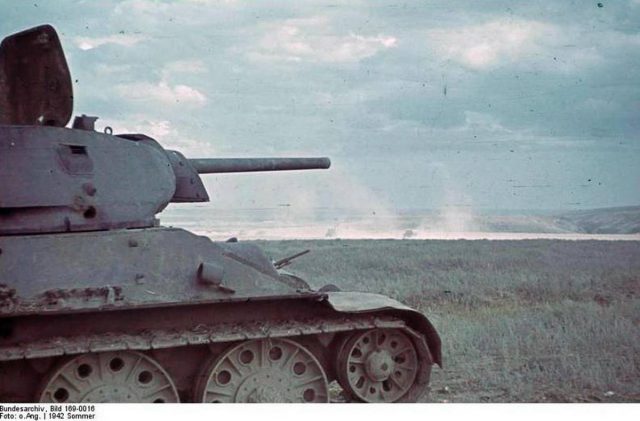
so here, considering, what, according to statutes, the rifle division could move no more than 20 km per day, but in fact, under German bombing, this speed was even lower, The Red Army in the border districts practically did not have a single chance to "bring down" a united front from rifle divisions, fending off German breakthroughs with mechanized corps. The troops in the border districts were doomed to fight separately, separate groups, against significantly superior enemy forces.
4. The best training and combat experience of the German Armed Forces.
Need to say, that the Germans have already at least 1933 g. made titanic efforts to expand their ground army, and 1935 city, they, in violation of international treaties, introduced universal military service. As a result, as well as the growth of industry opportunities, they were able to achieve an explosive growth in the number of troops - if the mobilization plan 1935/36 gg. envisaged the deployment of the army in 29 divisions and 2 Brigade, to the 1939/40 gg. - already 102 divisions and 1 brigade.
of course, not without natural growth diseases - so, at 1938 g. during the Anschluss of Austria, German divisions, moving to Vienna, just crumbled on the roads, flooding their roadside with broken equipment. But by September 1939 city, when the second world war started, these difficulties were largely overcome, and by the beginning of World War II, the ground forces of Germany consisted of 208 divisions, 56 of which were in different stages of formation and combat training, a 152 were concentrated to attack the Soviet Union. At the same time, by the beginning of the attack, the Germans had excellent combat experience., which they received in battles against the armies of Poland, France and England.
At the same time in the USSR before 1939 g. it is generally difficult to talk about the presence of an efficient army. Numerically, things weren't that bad, at that time, the Red Army had armored troops (43 brigades and not less 20 individual regiments), about 25 cavalry divisions, and 99 rifle divisions, of which, true, 37 were yesterday's territorial divisions, i.e. connections, rather, militia type, the overwhelming majority of officers who were not even regular military.
But in fact, these formations experienced a categorical shortage of officers., with very low quality of available frames (it got to that, that the ability to wield a personal weapon and the ability to teach this to others had to be especially noted in the certifications) and had huge gaps in combat training (“The troops still have, true, individual fighters, served a year, but never fired a live cartridge ", from the order of the NKO USSR N 113 from 11 December 1938 city). In other words, at 1939 d Germany was unequivocally superior to us both in the quality of training soldiers and officers.
Of course, the Red Army also had some combat experience - one can recall Khalkhin Gol and the Soviet-Finnish war, but you need to understand the difference. While Germany to 1939 g. created a fully capable and powerful armed forces, that, during the Polish and French campaigns became the best in the world, then the USSR, as a result of battles with the Finns, found out, that the state of the Red Army requires radical improvement, and this improvement had to be carried out against the background of the explosive growth of our armed forces!
Although this is in no way related to the topic of this article, but, so to speak, "Taking this opportunity" I would like to bow to S.K. Tymoshenko, in May 1940 g. who replaced K.E.. Voroshilov.
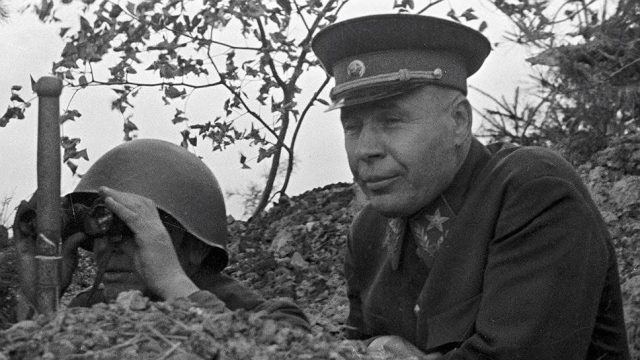
SK. Tymoshenko
The author of this article does not really understand, how did Semyon Konstantinovich succeed, but in 1941 g. German-fascist troops were met by a completely different army - a contrast in comparison with the level of the Red Army 1939 g. striking. Just remember the entries in the "War Diary" by the Chief of the General Staff of the Ground Forces, Colonel-General Halder. This document is invaluable to those, what is not a memoir, and personal notes, which the author did for himself, not counting on any publications at all. And so, on the 8th day of the Great Patriotic War there is such a record:
«The stubborn resistance of the Russians makes us fight according to all the rules of our military manuals. In Poland and in the West, we could afford certain liberties and deviations from statutory principles.; now it's unacceptable».
But, of course, wizard S.K. Tymoshenko was not and could not eliminate our lag in the quality of training of privates and officers.
All of the above can be considered strategic prerequisites for our defeat in battles. 1941 city, however, others were "successfully" added to them..
5. Weak work of headquarters.
Average German staff officers, of course, and from my own experience, and surpassed their Soviet counterparts in terms of training, but the problem was not only, and maybe not even so much in this. maybe, the key problems of our headquarters at the beginning of the war were intelligence and communications - two areas, which the German army attached great importance to, but which were frankly poorly developed infrom. The Germans knew how to remarkably combine the actions of their reconnaissance groups and reconnaissance aircraft, and their connections were excellently equipped with radio communications.
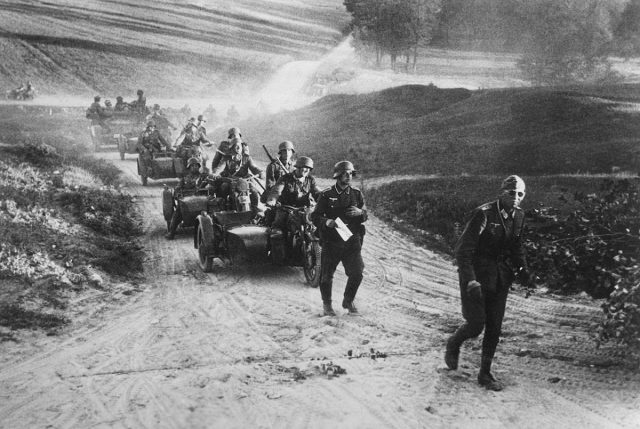
Reading the memoirs of German military leaders, we see, that the level of communication was, that the division or corps commander knew perfectly well, what are the troops entrusted to him doing, and his headquarters promptly received information about all emergency situations, complicating or threatening to disrupt the planned plans. At the same time in the Red Army in 1941-1942 gg, or even later, for, so that the division commander can understand, what exactly, happened during the day of hostilities, he had to go around his units at night and personally receive reports from commanders subordinate to him.
so here, these shortcomings of the Red Army were manifested in the Border Battle especially clearly. Enemy movement data was sketchy, but, which is much worse, entered the headquarters with a great delay. Then it took some time to work out a solution., after which the corresponding orders were sent (quite often - with the messengers) to the troops, who still had to find them somehow, which was not always easy. Thus, the delay in the transmission of orders could be 2 days and more.
As a result, we can say that, that the headquarters of the Red Army "lived yesterday", and, even in those cases,, when our officers take the most correct decision, which were only possible given the available information at their, they are still outdated by the time of the arrival of the troops.
"Excellent" to illustrate the level of the Red Army in 1941 g. It is the famous tank battle in the Triangle Dubno-Lutsk-Brody oil pipeline - for the operation command of the Southwestern Front has five mechanized corps, and another panzer division came up later. Nevertheless, key hit, from which, in fact, the fate of the operation depended, was inflicted by only part of the forces of the 8th mechanized corps alone - they did not manage to concentrate it for the offensive in full force.
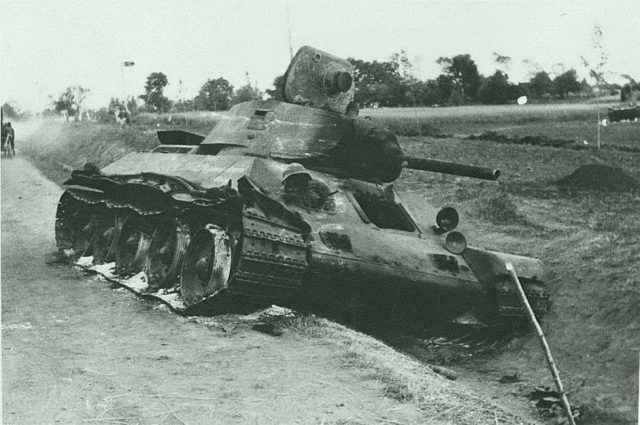
6. Sub-optimal composition of mechanized corps.
We have already spoken about this shortage of our troops.. If we compare the Soviet tank division by state, acting on 1941 city, from the German, we will see, that in terms of the number of light howitzers, the Soviet TD was twice inferior to the German, on regimental guns - in 5 time, and there was no anti-tank artillery in its composition at all. Moreover, on 375 tanks of the Soviet TD accounted for only 3 000 people. motorized infantry, and on 147-209 tanks of the German TD - 6 000 people.
The Soviet mechanized corps included 2 armored and one motorized division. At the same time, the state of the last - 273 tanka, 6 000 people. motorized infantry, availability of VET, etc., generally, was close enough to the German Panzer Division. But the fact, that the Germans included in their "strike fists", usually, 2 armored, and 1-2 motorized divisions, and the latter consisted only of motorized infantry, there were no tanks at all.
As experience has shown, German states were much better suited to the tasks of modern mobile warfare, than Soviet, despite, that there were much more tanks in Soviet formations. This once again underlines the fact, that the tank is just one of the means of armed struggle and is effective only with appropriate support from other types of troops. The same, who measures the strength of armies by the number of tanks in service, are making a huge, an unforgivable mistake for a historian.
But the lack of artillery and motorized infantry is only one "side of the coin". The second significant error in the structure of the mechanized corps was that, that they managed to "cram" five types of tanks into it, who, in principle, could not effectively interact as part of one unit.
Heavy tanks KB-1 were a means of breaking through enemy defenses, light T-26 were infantry escort tanks, and all of them would be quite appropriate in the form of separate battalions in the composition of rifle divisions, or in separate brigades / regiments, supporting recent. At the same time, the BT-7 and T-34 tanks were a means of mobile destruction of the enemy in the operational zone of his defense and were intended for deep and fast raids on the enemy rear., which the slow KV-1 and T-26 could not do.
But besides the tanks of the indicated brands, the mechanized corps also included their "flamethrower" modifications, but in fact, the entire range of tanks was present in the MK, produced before the war. Naturally, an attempt to "tie a horse and a quivering doe in one harness" could not be successful - the T-26 and KV-1 often became a "weight", limiting the mobility of mechanized corps, or you had to separate them into separate units, and leave them trailing behind the main forces.
7. Lack of vehicles and tractors.
The problem of suboptimal staffing was exacerbated by the, that our mechanized corps in the bulk were not provided with vehicles and tractors across the state. That is, even if the MK were fully equipped, even then it was necessary to talk about the tragic shortage of artillery and motorized infantry in them, but in fact the tanks could accompany on average about 50% artillery and motorized infantry, which were put to them by the state, the rest are "on their own two", Alas, did not have time.
As a matter of fact, the above reasons doomed the Red Army in general and its tank troops in particular to lose in the summer 1941 g. regardless of performance characteristics of equipment, in its arsenal. With such initial data, we were doomed even in that case., if by the pike's will, or there is a wave of a magic wand, our mechanized corps got into service instead of the T-26, BT-7, KV-1 and T-34, let us say, modern T-90.
Nevertheless, in the next article we will consider some of the features of the performance characteristics of the T-34 tanks and try to assess their impact on the failure in the battles of the initial period of the Great Patriotic War.
To be continued…
/Andrew from Chelyabinsk, topwar.ru/







